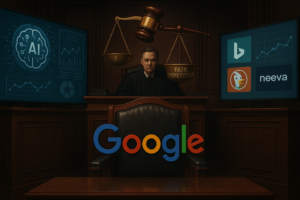The Dark Side of AI: Rising Threat of Deepfake Child Abuse Imagery
As artificial intelligence technology advances, so do its malicious applications. The alarming rise in AI-generated child abuse images poses a significant threat, with projections indicating a doubling of such content every six months. This article explores the implications and necessary countermeasures to combat this growing crisis.
Introduction
In recent years, the rapid evolution of artificial intelligence (AI) has led to remarkable advancements, but it has also given rise to significant challenges. One of the most disturbing trends is the increasing prevalence of deepfake technology and AI-generated child abuse imagery. According to authorities in the UK, these heinous acts are expected to double every six months, revealing a pressing need for awareness and action.
The Alarming Prediction
The National Police Chiefs’ Council’s AI lead has warned that the next five years will witness “significant increases” in the creation of indecent images facilitated by AI. This alarming prediction underscores a critical vulnerability in our current media landscape, where AI tools can fabricate lifelike images and videos, making it easier for perpetrators to exploit and abuse.
Deepfakes and Their Misuse
Deepfakes—hyper-realistic digital content generated by AI—have gained notoriety for their potential misuse across various sectors, including politics and entertainment. However, the most egregious application is in the realm of child exploitation, where the technology is weaponized to create realistic and horrifying depictions of abuse.
Consequences of AI-Generated Abuse Imagery
The consequences of this trend are dire. Victims of these crimes, often children, face lifelong trauma. The emotional and psychological scars left by such exploitation can severely impact their development and mental health. Moreover, the existence of this content can perpetuate further abuse, as it normalizes and desensitizes audiences to the suffering of the most vulnerable.
Challenges for Law Enforcement
Law enforcement agencies are struggling to keep pace with the rapid proliferation of AI-generated content. Despite the implementation of stringent regulations and laws against child exploitation, the anonymous and decentralized nature of the internet allows offenders to evade detection. The challenge lies in balancing the enforcement of these laws while fostering a safe and open digital environment.
Countermeasures and Collaboration
To combat this growing threat, cooperation between tech companies, law enforcement, and policymakers is essential. Technology firms must take proactive measures in developing tools that can detect and mitigate the spread of deepfake content. This includes:
- Improving algorithms that can identify manipulated images and videos
- Creating reporting mechanisms that empower users to flag suspicious content
The Importance of Education
Furthermore, educational initiatives aimed at raising awareness about the dangers of deepfakes and AI-generated abuse imagery are crucial. By informing the public about the potential risks associated with this technology, we can foster a more vigilant society that is better equipped to recognize and report exploitation.
Conclusion
As AI technology continues to evolve, so too must our response to its darker applications. The fight against deepfake child abuse imagery requires a comprehensive strategy that integrates technology, education, and collaboration among stakeholders. Only through concerted efforts can we hope to protect our children and hold perpetrators accountable in this digital age.


